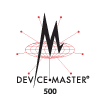 |  |
| |||||||||||||||||
![[Note]](/file/20207/2014.07.ftp.comtrol.com.tar/ftp.comtrol.com/html/images/note.gif) |
|
When upgrading from NS-Link drivers for Windows before v10.10, you must remove the existing driver and re-install the latest driver. In addition, you must have Bootloader v3.23 or higher.
![[Note]](/file/20207/2014.07.ftp.comtrol.com.tar/ftp.comtrol.com/html/images/note.gif) |
|
You can use this procedure to upgrade from versions provious to driver version 10.10.
Optionally, you can save your existing NS-Link device and COM port configuration to a device driver configuration file that you can upload to the DeviceMaster 500 and to individual ports after installing the 10.10 driver.
If necessary, open the Comtrol Drivers Management Console using one of these methods:
Windows Control Panel; go to your Control Panel and click on the Comtrol Drivers Management Console.
Shortcut; located under Start> Program Files> Comtrol> DeviceMaster> Comtrol Drivers Management Console.
Depending on your operating system, you may need to click Yes to the Do you want to allow the following program to make changes to this computer? User Account Control message.
In the left pane, highlight the DeviceMaster 500 for which you want to save the driver configuration.
Repeat the previous steps for each DeviceMaster 500 for which you want to save the driver configuration.
Remove the existing NS-Link driver.
![[Note]](/file/20207/2014.07.ftp.comtrol.com.tar/ftp.comtrol.com/html/images/note.gif)
Note Administrative privileges are required to remove device drivers on Windows systems, (excluding Windows Server 2003 and Windows XP).
From the Start button, click Programs>Comtrol>DeviceMaster>Driver Installation Wizard.
Click Next to start the Comtrol Driver Installation Wizard.
Click Remove All and Next.
Click Next to remove the driver.
Click Proceed to continue the driver removal process.
Click OK to the pop-up message that notifies you that you must restart the computer.
Click Close.
Shutdown or restart the system.
Make sure that you reboot the system as prompted after the driver removal.
-
Download the latest version of SocketServer.
-
Upload the latest version of SocketServer using PortVision DX.
Download the latest version of Bootloader.
![[Note]](/file/20207/2014.07.ftp.comtrol.com.tar/ftp.comtrol.com/html/images/note.gif)
Note You must update the Bootloader to v3.23 or higher.
-
Upload the latest version of Bootloader using PortVision DX.
Install the latest NS-Link driver by executing the DeviceMaster_Windows_x.xx.exe file following the installation wizard.
Associate the MAC address to the DeviceMaster 500 and if required, configure IP mode.
-
Configure the device properties or optionally, upload the device properties from the driver configuration file using this procedure.
If necessary, open the Comtrol Drivers Management Console using one of these methods:
Windows Control Panel; go to your Control Panel and click on the Comtrol Drivers Management Console.
Shortcut; located under Start> Program Files> Comtrol> DeviceMaster> Comtrol Drivers Management Console.
Depending on your operating system, you may need to click Yes to the Do you want to allow the following program to make changes to this computer? User Account Control message.
In the left pane, highlight the DeviceMaster 500 for which you want to load the device-level settings.
Click Load Configuration.
Browse to the location of the configuration file that you want to load.
Highlight the configuration file and click Open. The configuration file loads in a few moments.
Click Yes to the ComtrolApplet message, if you are using the file to restore a specific DeviceMaster 500. For example, you needed to remove and then re-install the DeviceMaster NS-Link device driver.
Click Apply so that the configuration is saved on the DeviceMaster 500.
Go to the next procedure if you want to restore port settings from a configuration file.
Configure the port properties or optionally, upload the COM port properties port-by-port using the following procedure. The port properties must uploaded on each port.
If necessary, open the Comtrol Drivers Management Console using one of these methods:
Windows Control Panel; go to your Control Panel and click on the Comtrol Drivers Management Console.
Shortcut; located under Start> Program Files> Comtrol> DeviceMaster> Comtrol Drivers Management Console.
Depending on your operating system, you may need to click Yes to the Do you want to allow the following program to make changes to this computer? User Account Control message.
In the left pane, highlight the port for which you want to load the port-level settings.
Click Load Configuration.
Browse to the location of the configuration file that you want to load.
Highlight the configuration file and click Open. The configuration file loads in a few moments.
Click Yes to the ComtrolApplet message, if you are using the file to restore a specific DeviceMaster 500. For example, you needed to remove and then re-install the DeviceMaster 500 NS-Link device driver.
Click Apply so that the configuration is saved on the DeviceMaster 500.
Repeat Steps c through h for each port.

 | 06/11/14 | Home | Comtrol Support |  | |
 | Copyright © 2014 Comtrol Corporation. |  | ||
